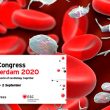Coronary artery disease is common among patients considered for transcatheter aortic valve implantation (TAVI). With the expansion of the indication for TAVI to a population with lower surgical risk, and therefore younger, there has been a gradual increase in the incidence of coronary events. However, there is limited data on treatment strategy and outcomes in<a href="https://solaci.org/en/2024/05/04/acute-myocardial-infarction-after-tavi-retrospective-analysis-of-200000-implants/" title="Read more" >...</a>
What Is the Prognosis of an Acute Myocardial Infarction in the Presence of Moderate Aortic Stenosis?
Aortic stenosis (AS) is a common condition that shares risk factors with coronary artery disease. Many patients can suffer from both diseases simultaneously, something that increases the risk of acute myocardial infarction in the presence of aortic stenosis. AS can cause ischemia even in the absence of coronary artery disease, due to ventricular hypertrophy, increased<a href="https://solaci.org/en/2023/07/12/what-is-the-prognosis-of-an-acute-myocardial-infarction-in-the-presence-of-moderate-aortic-stenosis/" title="Read more" >...</a>
ST Elevation Acute Myocardial Infarction Management in Latin America: A Survey
We are glad to invite the entire Latin American community to make part of this survey aimed at collecting data on the quality of ST elevation MI management in Latin America. It will take just 5 minutes of your time, is totally anonymous, and will contribute to the better understanding of the different treatment realities<a href="https://solaci.org/en/2022/03/15/st-elevation-acute-myocardial-infarction-management-in-latin-america-a-survey/" title="Read more" >...</a>
ESC 2020 | Acute Myocardial Infarction and Anemia: Are Transfusions Necessary?
In anemic patients undergoing acute myocardial infarction, a restrictive transfusion strategy is as safe as a more liberal approach, in addition to saving costs. The cutoff value to decide for a transfusion would be < 8 g/dl hemoglobin. The REALITY outcomes were presented during the virtual ESC 2020 sessions. Anemia is relatively common in patients<a href="https://solaci.org/en/2020/09/09/esc-2020-acute-myocardial-infarction-and-anemia-are-transfusions-necessary/" title="Read more" >...</a>
Is Complete Revascularization the Right Choice in Acute Myocardial Infarction with Multivessel Disease?
Courtesy of Dr. Carlos Fava. Primary coronary angioplasty has been the treatment of choice for acute myocardial infarction (MI) for many years, but such strategy is associated with nonculprit lesions in a large group of patients. While it has been proven that nonculprit-lesion revascularization offers better outcomes, the groups that would benefit from it are<a href="https://solaci.org/en/2019/09/13/is-complete-revascularization-the-right-choice-in-acute-myocardial-infarction-with-multivessel-disease/" title="Read more" >...</a>
Maintaining Physical Activity After an Acute Myocardial Infarction Reduces Mortality
Performing a successful primary angioplasty and prescribing preventive medication without advising on the importance of keeping up with or taking up physical activity is a waste of one of our many opportunities to improve the quality of life of our patients and reduce mortality among them. If clinical cardiologists do not take over the patient,<a href="https://solaci.org/en/2018/05/17/maintaining-physical-activity-after-an-acute-myocardial-infarction-reduces-mortality/" title="Read more" >...</a>
CTO in patients with acute myocardial infarction increases long term mortality
Courtesy of Dr. Carlos Fava. It has been proved that in a setting of acute myocardial infarction with multivessel lesions, only the culprit vessel must be treated (if there is no hemodynamic compromise) at first, and other severe lesions are to be treated during a second session. However, proper conduct in cases with presence of chronic<a href="https://solaci.org/en/2017/06/29/cto-in-patients-with-acute-myocardial-infarction-increases-long-term-mortality/" title="Read more" >...</a>
MASTER Trial: Prospective, multicentre, randomized trial evaluating the MGuard stent in the treatment of patients with acute myocardial infarction with ST segment elevation (STEMI).
Foreword: The EPS MGUARD stent (embolic protection stent) has a fine metal structure covered by a thin polyethylene fiber mesh with pores of 5 microns wrapping the stent that might prevent distal embolization during primary angioplasty and would therefore be particularly attractive during primary angioplasty. Methods and Results: We included 432 patients referred for primary<a href="https://solaci.org/en/2015/06/24/master-trial-prospective-multicentre-randomized-trial-evaluating-the-mguard-stent-in-the-treatment-of-patients-with-acute-myocardial-infarction-with-st-segment-elevation-stemi/" title="Read more" >...</a>
Possible benefit for patients with acute myocardial infarction but without ventricular dysfunction.
Background: To evaluate whether the administration of eplerenone 24 hours after an acute myocardial infarction (AMI) in patients without heart failure reduces mortality and cardiovascular morbidity. Methods and results: The study randomized 612 patients to evaluate the safety and efficacy of early treatment with eplerenone in patients with AMI. The primary end point was a<a href="https://solaci.org/en/2015/06/24/possible-benefit-for-patients-with-acute-myocardial-infarction-but-without-ventricular-dysfunction/" title="Read more" >...</a>
Possible benefit for patients with acute myocardial infarction but without ventricular dysfunction.
Background: To evaluate whether the administration of eplerenone 24 hours after an acute myocardial infarction (AMI) in patients without heart failure reduces mortality and cardiovascular morbidity. Methods and results: The study randomized 612 patients to evaluate the safety and efficacy of early treatment with eplerenone in patients with AMI. The primary end point was a<a href="https://solaci.org/en/2015/06/24/possible-benefit-for-patients-with-acute-myocardial-infarction-but-without-ventricular-dysfunction-2/" title="Read more" >...</a>









